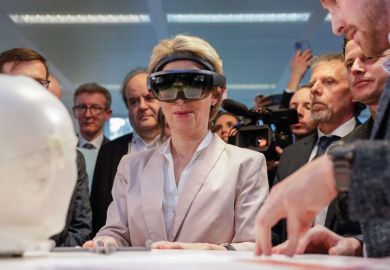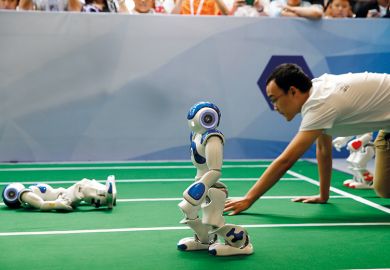The Trump administration is pushing Congress to heavily redirect US research priorities towards advanced computing, saying it is determined to keep the US at the forefront of fields with critical economic and security implications.
The administration, in its budget plan for the 2021 fiscal year, is seeking to double federal spending on artificial intelligence to nearly $2 billion (£1.6 billion) and on quantum information science to $860 million within two years.
At the same time, however, the White House is asking lawmakers to reduce total federal spending on research and development by 9 per cent overall from current-year levels, with deep cuts in areas including science education and research related to energy and the environment.
Administration officials have explained the strategy as a prioritisation of research areas with the most far-reaching potential. “They intersect basically with every field of science and technology,” the White House’s chief science adviser, Kelvin Droegemeier, said of artificial intelligence and quantum information science.
One topical example that Professor Droegemeier offered at a congressional hearing was the use of advanced computing to simulate models of a possible vaccine against the new coronavirus. While the US was still the global leader in science and technology, Professor Droegemeier told lawmakers, “continued leadership is not at all guaranteed”.
Along with submitting the budget request, the administration has been dispatching its chief technology officer, Michael Kratsios, to argue publicly for the idea that the US cannot afford to lose the race for scientific dominance in AI.
As part of that, Mr Kratsios has been promoting administration guidelines for handling the social and security risks associated with AI that are intended to give inventors and companies relatively wide discretion.
The administration’s guidelines “promote a light-touch regulatory approach”, Mr Kratsios wrote in a summary of the plan.
By comparison, Mr Kratsios has argued, the European Union appears heavy-handed. The EU, he told one conference, “clumsily attempts to bucket AI-powered technologies as either ‘high-risk’ or ‘not high-risk’”.
Beyond the Trump administration, however, there is a developing consensus in both the EU and the US that a more centralised approach to AI research is necessary. EU leaders are considering a unified facility along the model of Cern, the continent’s main nuclear research centre.
Although such a physical centre might not be necessary in the US, more government-wide coordination of AI science appears essential, said Tobin Smith, vice-president for policy at the Association of American Universities, the leading grouping of US research institutions.
Mr Smith spoke after the National Academy of Sciences hosted a 75th-anniversary celebration of the federal government’s historic decision to fund basic research through US universities. That model was incredibly successful because it allowed free-flowing scientific discovery, Mr Smith said.
But the intervening years, he argued, have shown that the US can struggle at moments that require concentrated emphasis on a single topic. One leading example with security and economic implications that was highlighted at the National Academy of Sciences event was the US’ failure to establish a more competitive position with China in 5G digital wireless technology.
In that context, Mr Smith said, the Trump administration deserved credit for identifying AI as a topic that now demands concentrated investment and development strategies reaching across all government agencies and funders.
Register to continue
Why register?
- Registration is free and only takes a moment
- Once registered, you can read 3 articles a month
- Sign up for our newsletter
Subscribe
Or subscribe for unlimited access to:
- Unlimited access to news, views, insights & reviews
- Digital editions
- Digital access to THE’s university and college rankings analysis
Already registered or a current subscriber?








